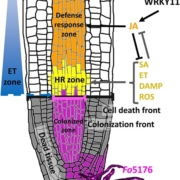
Resolving phytohormone response zones by fluorescent reporters
Plant Science Research WeeklyPhytohormones such salicylic acid (SA), ethylene (ET), and jasmonic acid (JA) are known to regulate plant immunity, but their spatial dynamics has remained unclear. Using a set of fluorescent reporters in Arabidopsis, Calabria et al. resolved the hormonal responses upon Fusarium oxysporum infection at…
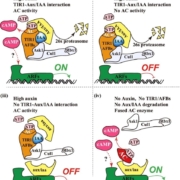
Adenylate cyclase is a critical component of auxin transcriptional responses
Plant Science Research WeeklyThis exciting paper by Chen, Qi, Zou et al. adds a new twist to the story of auxin. Until this work, the current model for how auxin mediates transcriptional changes has been that auxin (IAA) binds to TIR1, a ubiquitin ligase, when interacts with and causes the degradation of Aux/IAA repressor proteins,…
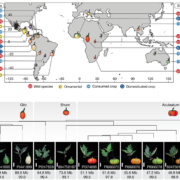
Double trouble: The Solanum pan-genome shows gene duplication complicates predictability
Plant Science Research WeeklyA pan-genome has been assembled for the Solanum genus, which contains many diverse and economically important crops including potato, tomato, and African eggplant. Genomes were assembled for 22 species, and genes were predicted based on previous reference genomes and from RNA sequences across multiple…
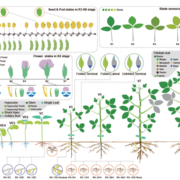
SoyOmics: A new tool to explore the transcriptome dynamics of soybean
Plant Science Research WeeklySoybean, originally domesticated in China, is widely recognized for its high protein and oil content, making it a crucial crop for human consumption, animal feed, and biofuel production. Despite its economic and agricultural significance, research tools and genomic resources for soybean have lagged behind…
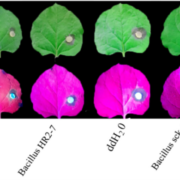
A broad-spectrum antimicrobial peptide identified from Burkholderia bacterium
Plant Science Research WeeklyMicrobial pesticides are widely applied to improve crop production, but the active molecules are largely unexplored. In a recent study, Mohamed et al., identified an antimicrobial peptide (AMP) from crop-associated microbes and showed its inhibitory effects on various phytopathogens. The authors first…
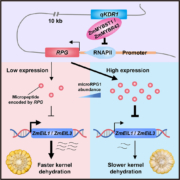
A novel micropeptide regulates kernel dehydration in maize through ethylene signaling
Plant Science Research WeeklyKernel dehydration rate (KDR) is a critical factor affecting mechanized maize harvesting and kernel quality. Despite its agricultural importance, the molecular mechanisms regulating KDR remain unclear. Previous studies have identified several QTLs controlling KDR, but their functional characterization…
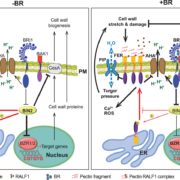
Brassinosteroid-driven cell expansion: How FERONIA and BIN2 shape plant growth
Plant Science Research WeeklyFERONIA (FER), a member of the Catharanthus roseus receptor-like kinase 1–like (CrRLK1-like) receptor kinase family, was initially identified as a key regulator of female fertility in Arabidopsis. Later studies revealed that FER is a multifunctional protein involved in nearly all aspects of plant growth…
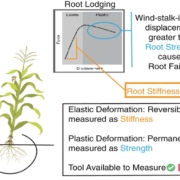
Firmly grounded: Root system stiffness and plant mechanics
Plant Science Research WeeklyField-based technologies are essential for understanding plant mechanical behavior in field-relevant contexts. This behavior can be elastic, with temporary deformation measured as stiffness, or plastic, with permanent deformation measured as strength. While field-based technologies exist for addressing…
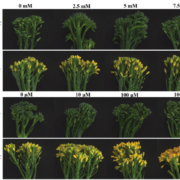
It’s not easy being green: Maintaining broccoli postharvest quality
Plant Science Research WeeklyUp to 40% of harvested broccoli never reaches consumers due to quality losses during senescence, including yellowing and nutrient degradation. Reactive oxygen species cause oxidative stress within the plant, accelerating these negative changes through the jasmonate (JA) pathway. Gage et al. investigated…

